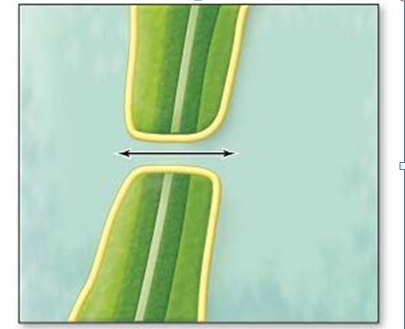While synthesizing a new blue pigment, a chemist notices that the new compound congregates between an aqueous (water) environment and a hydrophobic environment. When added to a mixture of oil and water, the pigment creates a blue ring around the droplets of oil. Which of the following statements best describes this new pigment?
A) The pigment is a polar molecule and is forming hydrogen bonds with both the water and oil molecules.
B) The pigment is hydrophilic and will not form hydrophobic bonds with the oil.
C) The pigment is amphipathic, having polar and nonpolar regions.
D) The pigment is neither polar nor nonpolar; it is apolar.
E) The pigment is probably hydrophobic and is attempting to bond with the oil.
C) The pigment is amphipathic, having polar and nonpolar regions.
You might also like to view...
The total genetic complement of ALL cells within a microbial community is called a(n)
A) chromosomal island. B) interactome. C) metagenome. D) metabolome.
In plants, this type of cell connection, lined by the cell membranes and allowing transport of molecules between cells, is the

A. gap junction.
B. adjacent junction.
C. tight junction.
D. plasmodesma.
E. anchoring junction.
Why is colony collapse disorder (CCD) a problem for all of us?
a. the pathogen responsible for CCD can infect multiple hosts b. the decline in honey production could cause our economy to collapse c. bees are essential as key pollinators of our agricultural crops d. actually, it’s not-- there are other pollinators that can take over for the bees e. bees could spread this disease to humans through their honey
Reverse transcriptase is often used as the heat-stable enzyme in PCR
Indicate whether the statement is true or false